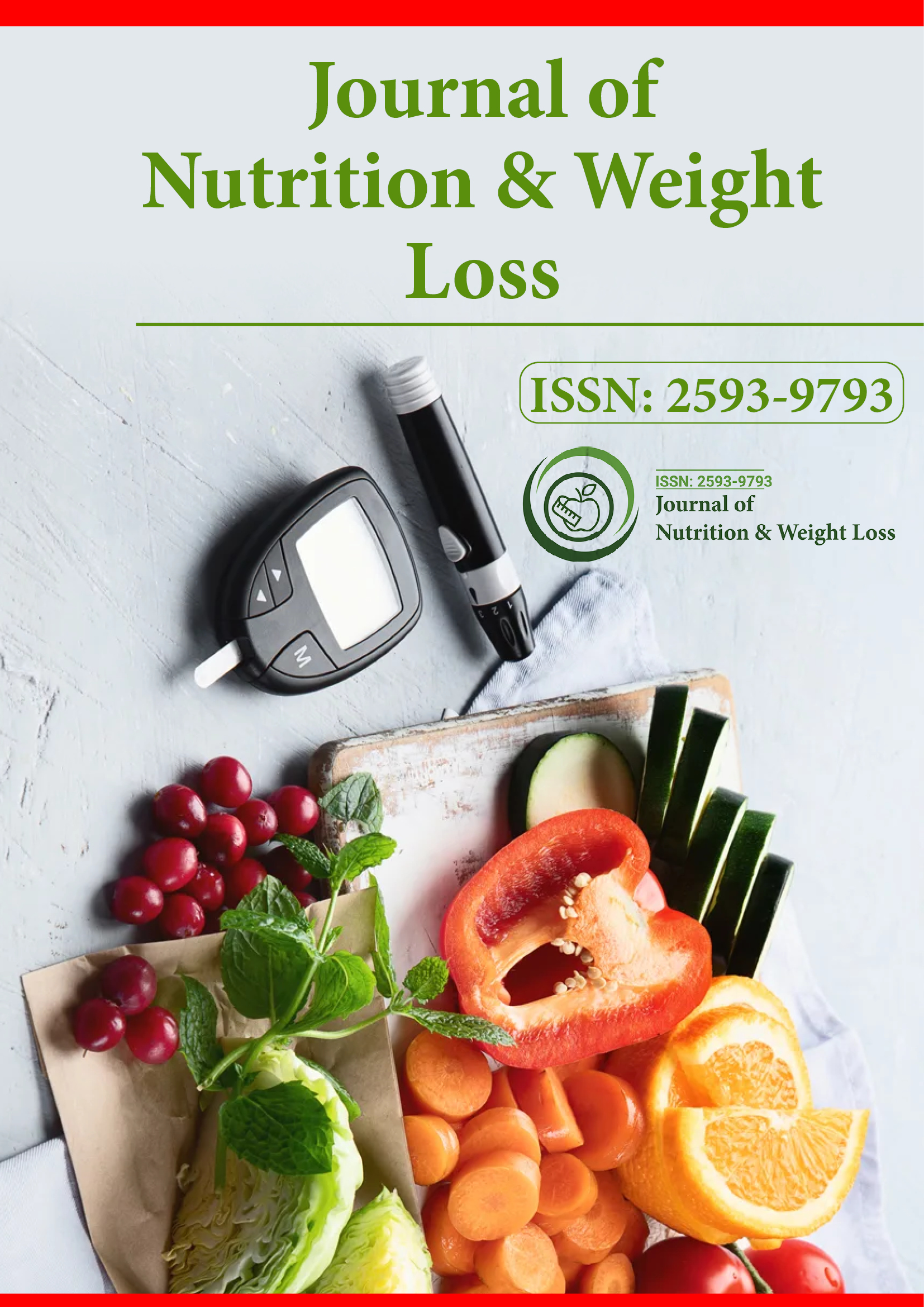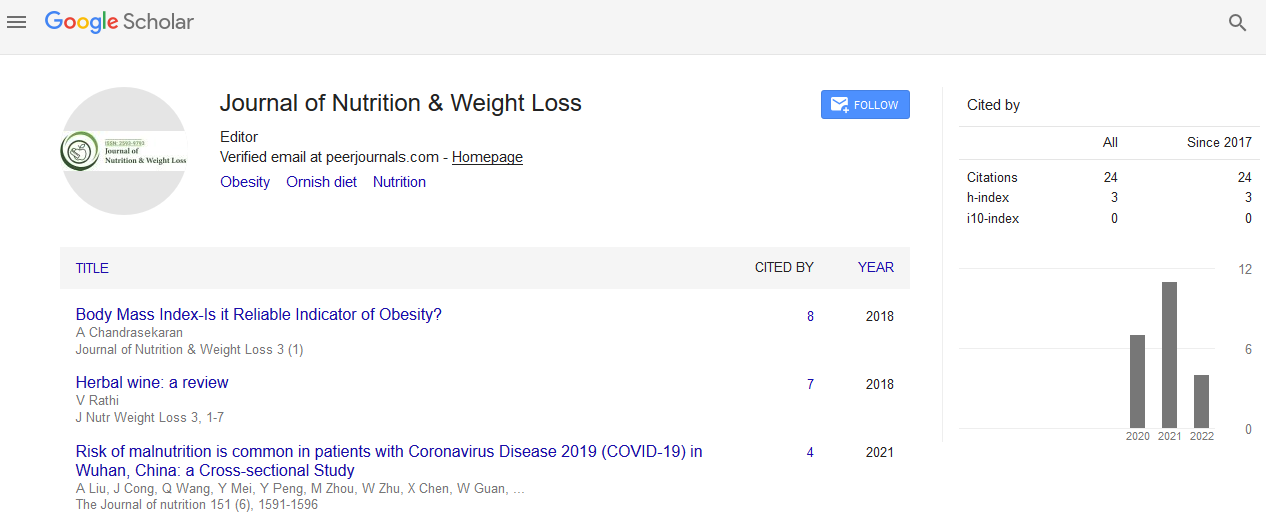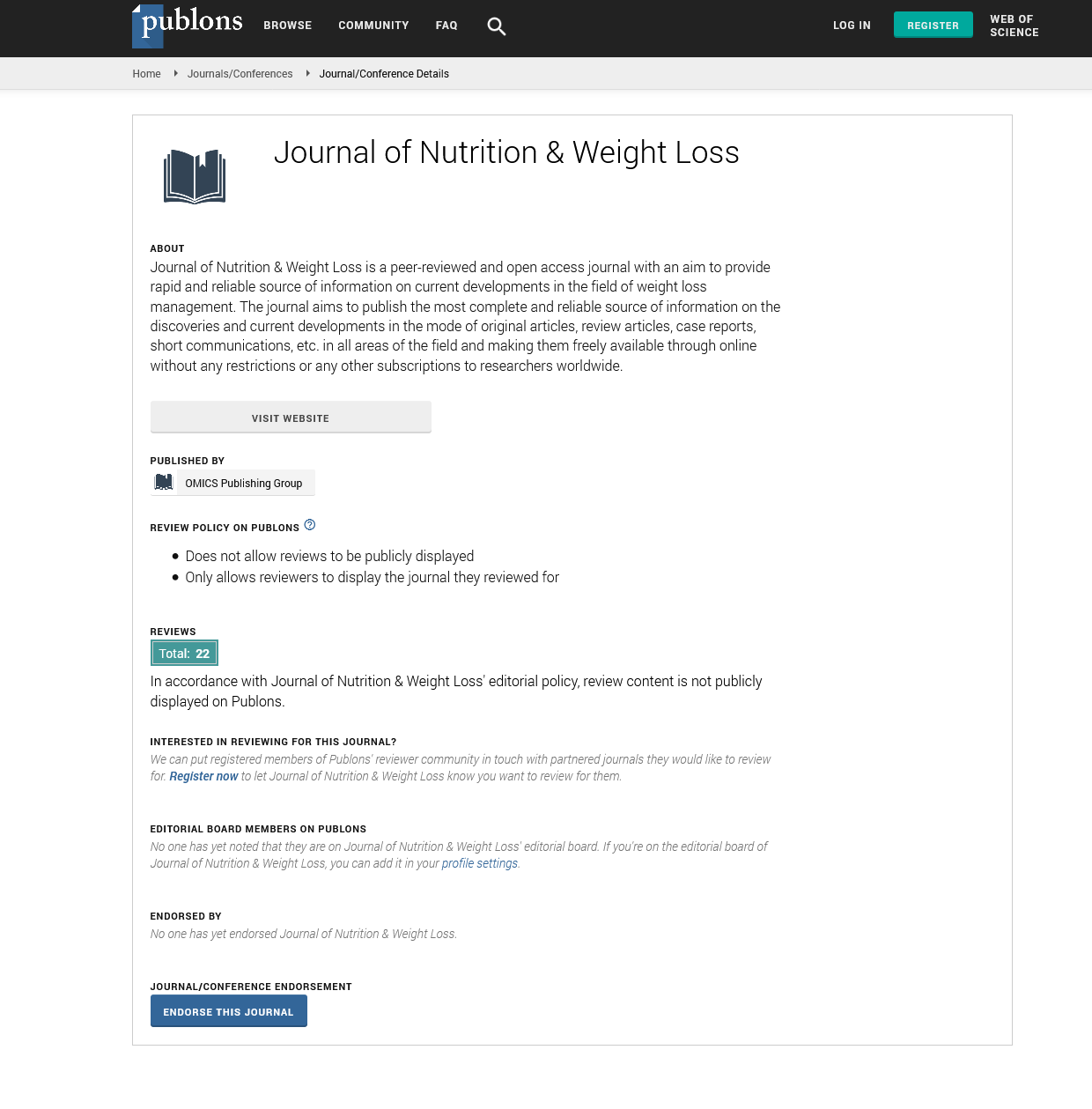Indexed In
- RefSeek
- Hamdard University
- EBSCO A-Z
- Publons
- Euro Pub
- Google Scholar
Useful Links
Share This Page
Journal Flyer

Open Access Journals
- Agri and Aquaculture
- Biochemistry
- Bioinformatics & Systems Biology
- Business & Management
- Chemistry
- Clinical Sciences
- Engineering
- Food & Nutrition
- General Science
- Genetics & Molecular Biology
- Immunology & Microbiology
- Medical Sciences
- Neuroscience & Psychology
- Nursing & Health Care
- Pharmaceutical Sciences
Commentary Article - (2022) Volume 7, Issue 5
Dietary Categories and How they're used for Weight Reduction?
John Aristotle*Received: 11-Aug-2022, Manuscript No. JNWL-22-18200; Editor assigned: 15-Aug-2022, Pre QC No. JNWL-22-18200(PQ); Reviewed: 30-Aug-2022, QC No. JNWL-22-18200; Revised: 07-Sep-2022, Manuscript No. JNWL-22-18200(R); Published: 14-Sep-2022, DOI: 10.35248/2593-9793.22.7.148
Description
While thousands, if not hundreds of weight-loss programs, diets, remedies, and devices have been made available to the public who are overweight, the multifaceted causes of obesity make it difficult for experts, researchers, and those who are overweight to come up with long-lasting, efficient plans for weight loss and maintenance. Instead, the majority of the blame must go to the behavioral and environmental factors that will work together to persuade people to participate in insufficient physical activity and consume excessive amounts of food compared to their energy expenditure. These elements are the focus of weightmanagement techniques.
An individual can successfully manage their body weight by using a balanced diet and frequent exercise. Getting enough sleep may also aid someone in managing their weight. It is balanced because it gives your body all the vitamins and minerals it requires for optimal operation. It prioritizes plant-based foods over animal foods, especially fruits and vegetables. Almonds or pistachios, string cheese with an apple, Greek yoghurt, or a banana with peanut butter are all healthy snacks for losing weight. Don't run out and buy a bunch of "health foods" that you know you'll never consume; keep in mind that the greatest diet is the one you'll stick to.
After reducing weight, a person might manage their weight in a variety of ways
• Avoid restricted diets
• Exercise
• Consume extra protein
• Pay attention to your carbohydrate intake are some beneficial alternatives.
Eating patterns that could encourage overweight
1. Having few or no home meals
2. Choosing calorie-dense, high-fat foods
3. Choosing high-fat snacks from vending machines or snack stores that are conveniently located while not giving you enough time to make more economical, healthier options.
4. Eating at sit-down establishments with oversized portions or "all-you-can-eat" buffets
Simple adjustments that can alter the dining atmosphere include
1. Pack bag lunches and prepare dinners at home.
2. Acquire the ability to gauge or gauge portion proportions in restaurants
3. Recognize the foods and menu items on buffet tables by their fat content.
4. Quit smoking and limit alcohol intake.
5. Replace high-calorie items with low-calorie ones.
6. Change your commute to avoid passing a favourite grocery store.
Diet
Exercise may be the most crucial component of a weightmaintenance program, but food restriction is unquestionably the aspect of a weight-loss program that most significantly affects the rate of weight reduction. There have been countless diets advocated, but no matter what name they go by, all diets involve reducing certain ratios of protein, carbohydrate (CHO), and fat.
Hypocaloric, nutritionally-balanced diets
This kind of diet includes the same kinds of foods that a patient typically eats, just in smaller portions. The Pyramid advises people to eat a variety of meals, the bulk of which should be grain products (such as bread, pasta, cereal, and rice), at least five servings of fruits and vegetables per day, moderate amounts of dairy products, and little to no meat or other high-fat or highsugar foods. However, it is crucial to emphasize the serving sizes used to calculate the necessary amount of servings when using the Pyramid. It is simple to gain sufficient amounts of the other crucial nutrients, even with lesser meals.
Replacement meals
The meal replacement industry advises using their products to replace one or two of the three daily meals, with the third meal being a sensible, balanced meal. Also suggested each day are two snacks made up of fruits, vegetables, or diet snack bars.
Hypocaloric, unbalanced diets
The justification offered for these diets by their proponents is that restricting just one type of macronutrient makes it easier to lose weight than restricting the others. Numerous of these diets are developed by non-health professionals, are frequently not based on reliable scientific nutrition principles, and are published in books intended for the general population.
These are the main categories of imbalanced, lowcalorie diets
• Low-fat and high-fiber
• Very- low-calorie diets
• High-protein
• Low- carbohydrate diets
Conclusion
It appears that eating fewer calories aids people in maintaining weight loss. According to data from a meta-analysis, Mediterranean diets appear to be more successful than low-fat diets at causing clinically significant long-term improvements in cardiovascular risk factors and inflammatory markers.
Citation: Aristotle J (2022) Dietary Categories and How they’re used for Weight Reduction. J Nutr Weight Loss. 7:148.
Copyright: © 2022 Aristotle J. This is an open access article distributed under the terms of the Creative Commons Attribution License, which permits unrestricted use, distribution, and reproduction in any medium, provided the original author and source are credited.


